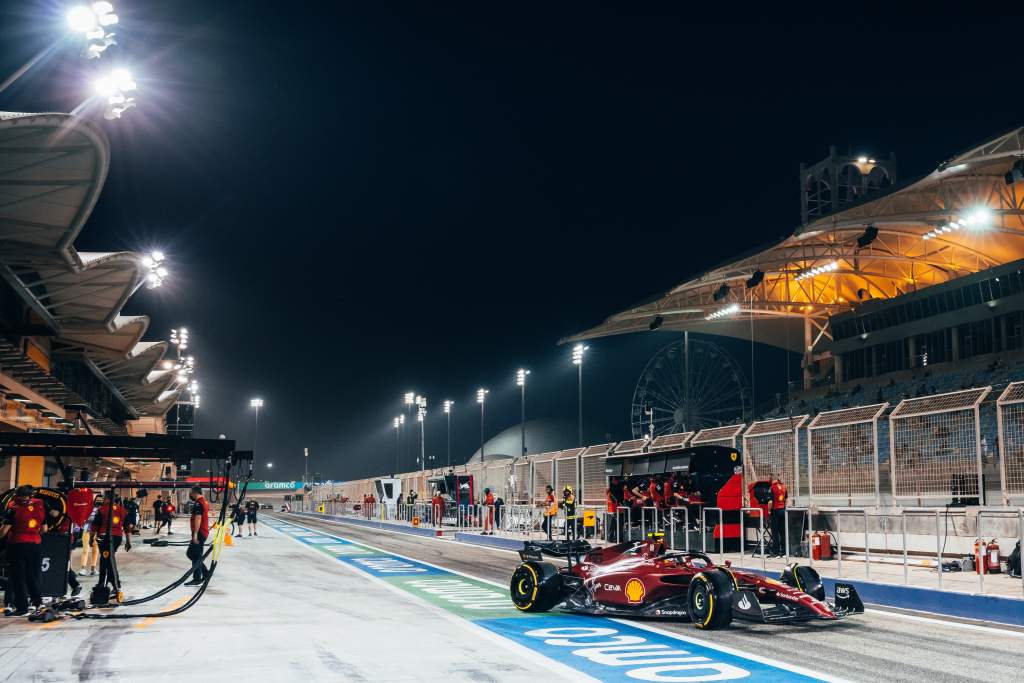Up Next

On the raw numbers from day two of Bahrain Formula 1 testing, the Ferrari is the fastest by a significant margin – in the low fuel running from Red Bull and in the race stint simulation from the Mercedes.
But, be careful. We haven’t seen a representative long run from Red Bull today and Ferrari is convinced that Mercedes is disguising its true pace on the single lap running.
“We can see in GPS what they are doing,” said Carlos Sainz. “I don’t want to say any more.”
Mercedes hiding potential?
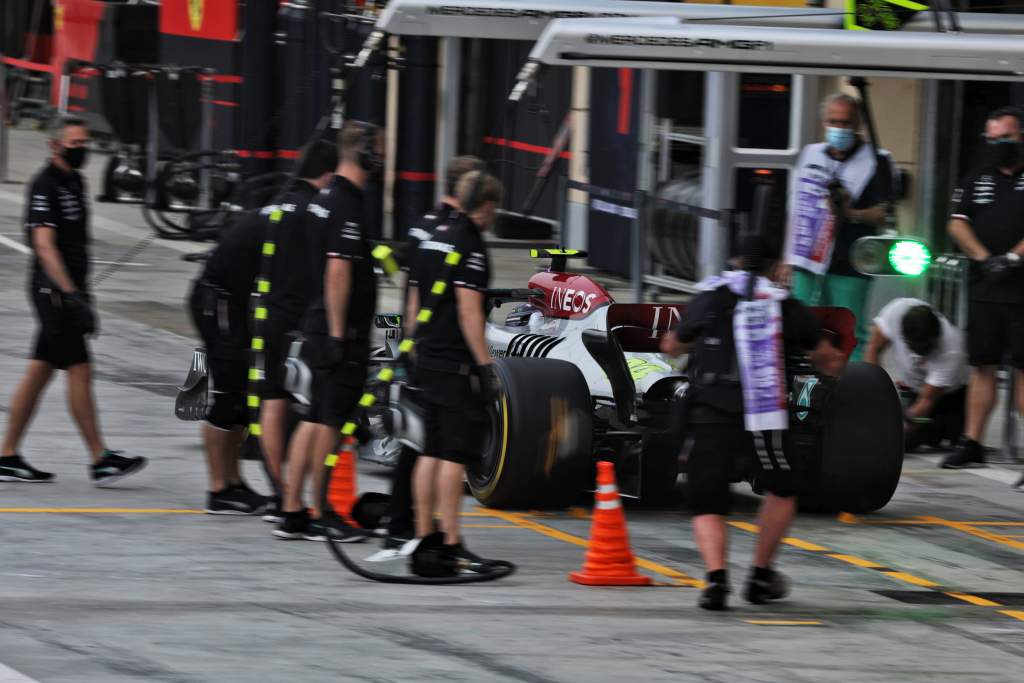
There is a suggestion that Mercedes is using its power unit in a way which keeps the car’s true lap time potential hidden.
It was a suggestion which Lewis Hamilton laughed off after going only fourth-quickest, 0.6s adrift of Sainz’s pacesetting Ferrari.
“We’ll be really, really, really good if we were not having all these oversteer moments and tacky driving!” he said.
“That’s not the case. We have things we’re trying to get through. Others are struggling less. Who knows, maybe when we’ll get to next week we’ll have a better understanding.”
We can see the root of Sainz’s suspicions in the graph below, showing a comparison between Sainz and Hamilton’s speeds around the course on their respective best laps (Sainz 1m33.532s, Hamilton 1m34.141s).
Below is the speed trace comparison of Sainz (in red) and Hamilton (in blue). It can be seen that there is very little difference in corner speeds between the two cars. But that the Mercedes is consistently tailing off on acceleration in the latter parts of the straights.
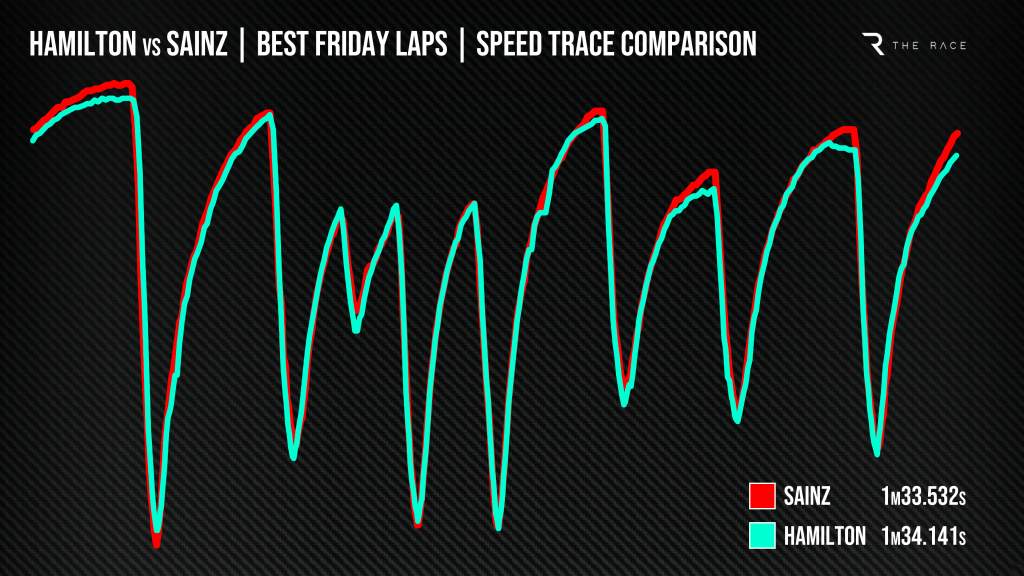
The data presented in the graph strongly suggests that the Mercedes is reducing its electrical deployment earlier on the straights than the Ferrari. Clearly Sainz believes this is a deliberate ploy by Mercedes.
The other possibility of course is that the Mercedes simply cannot deploy as effectively as the Ferrari, though this seems unlikely given that it has never been a problem with previous Mercedes power units.
To try to get a better read on this, we tried a second comparison – with the Mercedes-powered Aston Martin of third-fastest Lance Stroll. Unfortunately, the data is corrupted and his trace ends part-way through. However, he is significantly faster than Hamilton onto the start-finish straight and doesn’t appear to be tailing off in the same way as Hamilton, despite having the same Mercedes power unit.
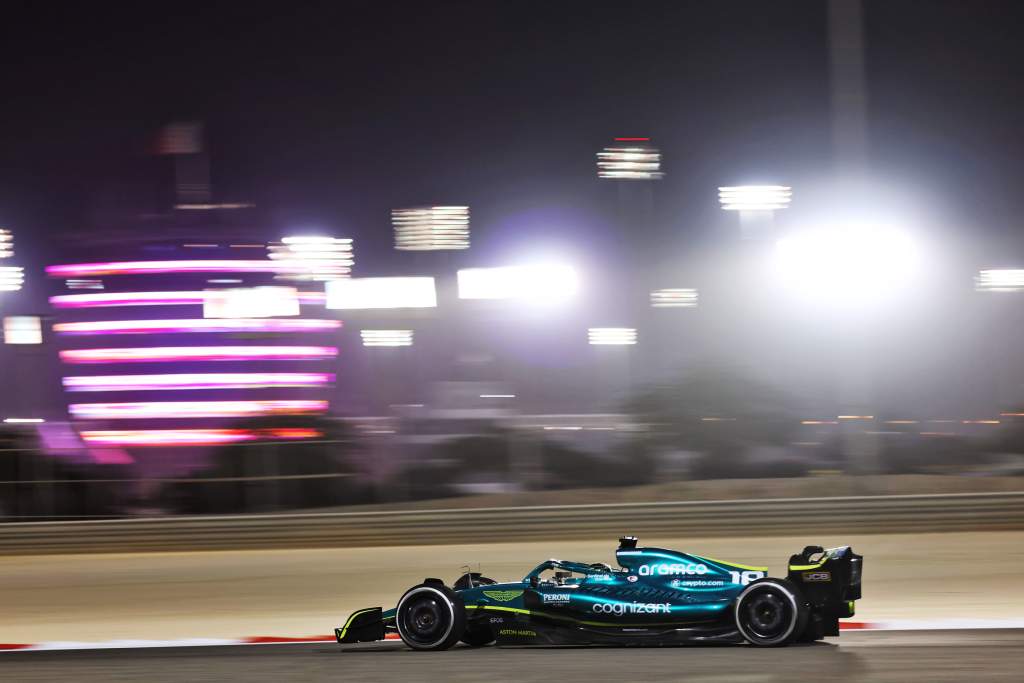
So let’s just go with Sainz’s hypothesis for now. Would that difference in deployment account for all of the 0.6s by which Hamilton trailed Sainz in the headline times? No, perhaps no more than half of that.
Although the corner speed margins were small, the Ferrari is slightly faster through Turns 4, 6 and 13, with the Mercedes quicker only through Turn 1. They are pretty much equal in the remaining Turns 6, 8 and 11.
Although Sainz set his time on the C4 compound and Hamilton the C5, it’s not believed there is a significant difference in their performance over a lap around here. The big difference is that between the C3 and C4 (around 1s). It is worth noting that neither the C4 nor C5 will be used during the Bahrain Grand Prix weekend, which has the C1/2/3 selection.
What of fuel loads? Historically, Ferrari has tended to run a slightly lower base fuel load than Mercedes, with statistical comparison between pre-season pace and qualifying at race one suggesting a difference of around 5kg between the two teams. Around Bahrain that would be worth around 0.175s.
So if we assume the Ferrari is flattered in the comparison by that amount and that the power unit usage accounts for around 0.3s, that still leaves the Ferrari around 0.125s faster. But the margins of error in all these order of magnitude assumptions could easily obliterate that or exaggerate it.
We can only go with the data the tests produce and make a few educated guesses around that but it does appear the Ferrari has the edge on the Mercedes, but not by the extent suggested in the headline times.
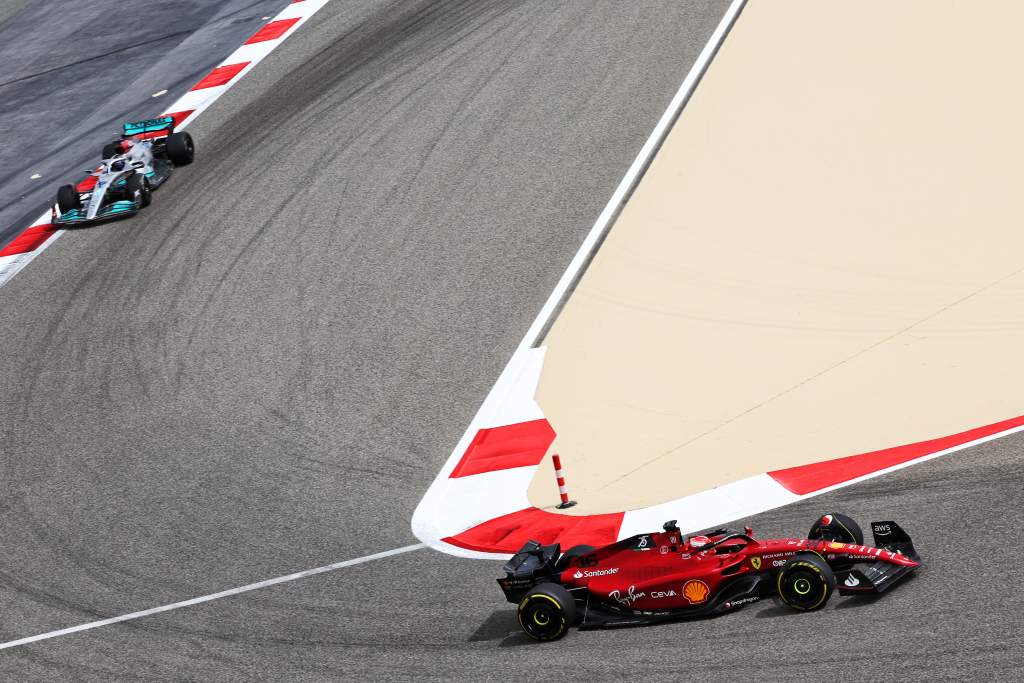
Another useful comparison might be that between Charles Leclerc’s Ferrari and George Russell’s Mercedes in the morning.
Both teams appeared to be doing truncated two-stop race simulations, with a medium/medium/hard combination for each stint. In both cases there was no refuelling; they came in, had their tyres changed and went back out. The runs began only about four minutes apart.
Leclerc didn’t get to complete his final ‘stint’ because of the day’s second red flag. But here’s how those simulations panned out.
Russell
Stint 1 C3 15 laps 1m43.023s average
Stint 2 C3 15 laps 1m42.317s
Stint 3 C2 9 laps 1m41.246s
Leclerc
Stint 1 C3 15 laps 1m42.167s
Stint 2 C3 12 laps 1m41.540s
Stint 3 C2 Not completed
On those raw numbers the Ferrari is around 0.8s faster, as opposed to its 0.6s advantage in the single lap runs later in the day. Again, the gap is likely exaggerated by the Mercedes’ power usage and fuel load, but still it suggests the Ferrari has the edge at the moment.
Certainly, on track it appears a nicer drive. As Hamilton alluded, the Mercedes was more frequently understeering off track (particularly at Turns 4 and 10) and its porpoising looked more severe, albeit not as bad as yesterday.
“You can see on the onboards we’re getting tank-slappers left, right and centre,” said Hamilton, “then bouncing and bumping. So, not quite happy at the moment but we’re trying to tame it…
“We’re just working through lots of different scenarios trying to figure out how to hold onto the downforce and not have it bouncing.
“I think everyone is probably in a similar boat. Some have managed to get around it in a better way.”
Leclerc seemed to share his team-mate’s beliefs regarding the relative performance.
“Our balance seems to be quite good but this means absolutely nothing on the performance [comparison]… We are trying to guess, more or less, how much the others are hiding but for now nothing is clear.”
Where does Red Bull fit in?
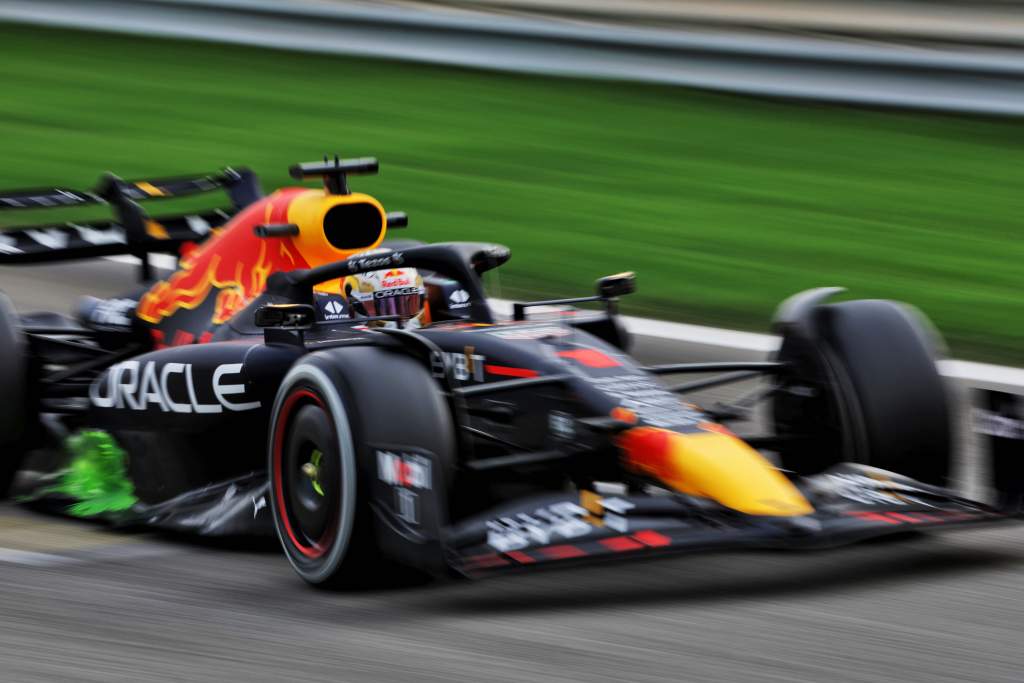
Max Verstappen set the second-fastest time of the fay, albeit still 0.5s adrift of Sainz’s Ferrari. Obviously, the same provisos about fuel load apply as with the Mercedes comparison and Red Bull has historically fuelled to a similar level to Mercedes.
Furthermore, Verstappen’s day was spent experimenting with set-ups after Sergio Perez completed a very useful long run yesterday.
Red Bull’s head of race engineering Guillaume Rocquelin was upbeat.
“It was more of a stop-start day today, mostly by design. We had a good continuous run yesterday, so today was more about exploring and testing different things. We spent more time in the garage making changes to the car and also taking more risks.
“We learned a lot and gathered a lot of information today. I’m quite happy with what we found out, we are progressing in different directions and it’s all very positive.”
The car appeared well balanced and an easier, more consistent drive than the Mercedes. But can we get any other data comparisons?
It’s dangerous to compare from different days as the track grip can vary so much. But with a few long runs from today as added perspective, Perez’s numbers from yesterday now look impressive.
Perez Thursday
STINT 1 C3 14 laps 1m41.186s average
STINT 2 C3 11 laps 1m40.340s
STINT 3 C3 10 laps 1m39.995s
These averages of yesterday are around 1s per lap better than those of Leclerc’s long-run stints today. So it’s unlikely the fuel loads and track conditions were the same.
But it suggests that Red Bull absolutely should be considered with Ferrari and Mercedes when discussing who is really fastest at this stage. The team’s different run plan just makes precise comparison impossible.


